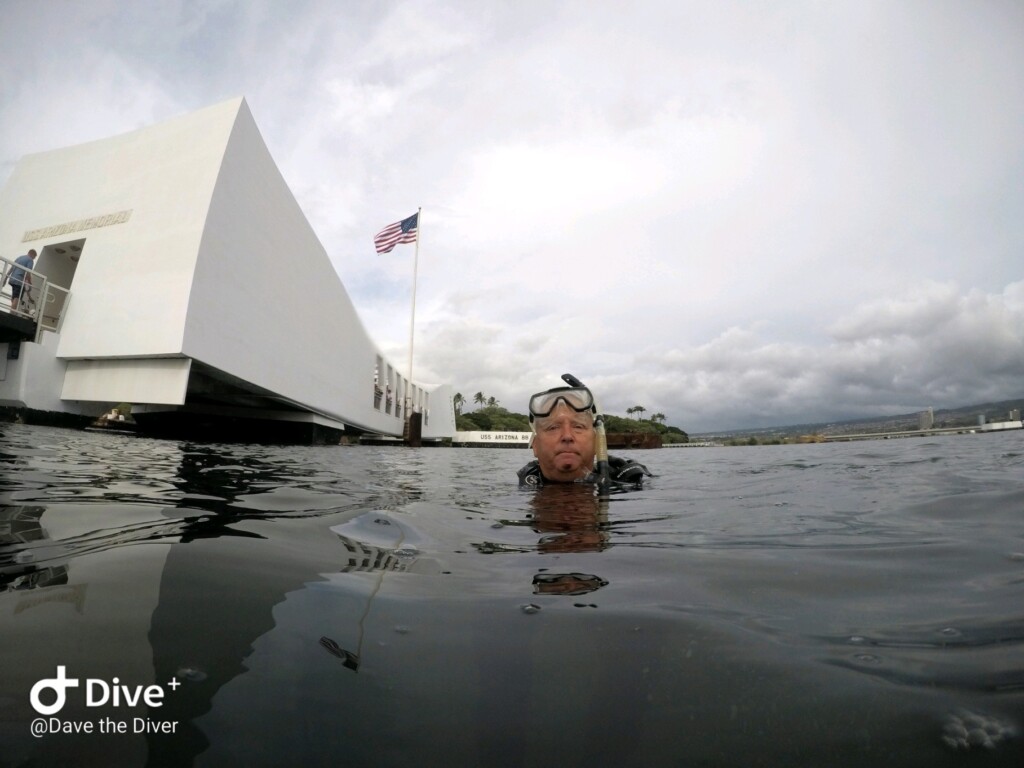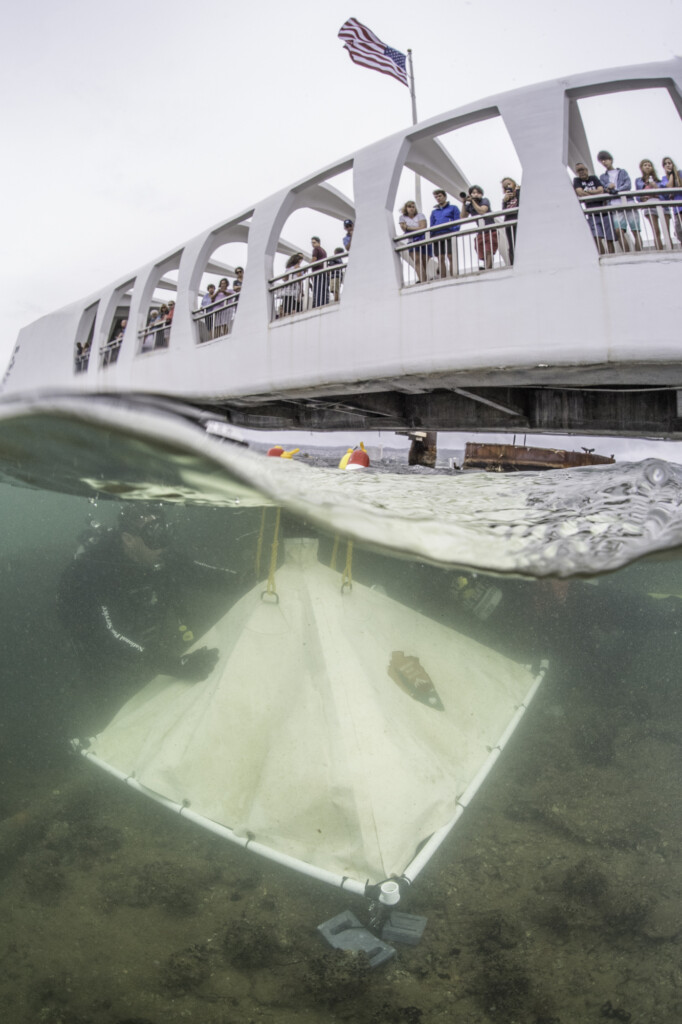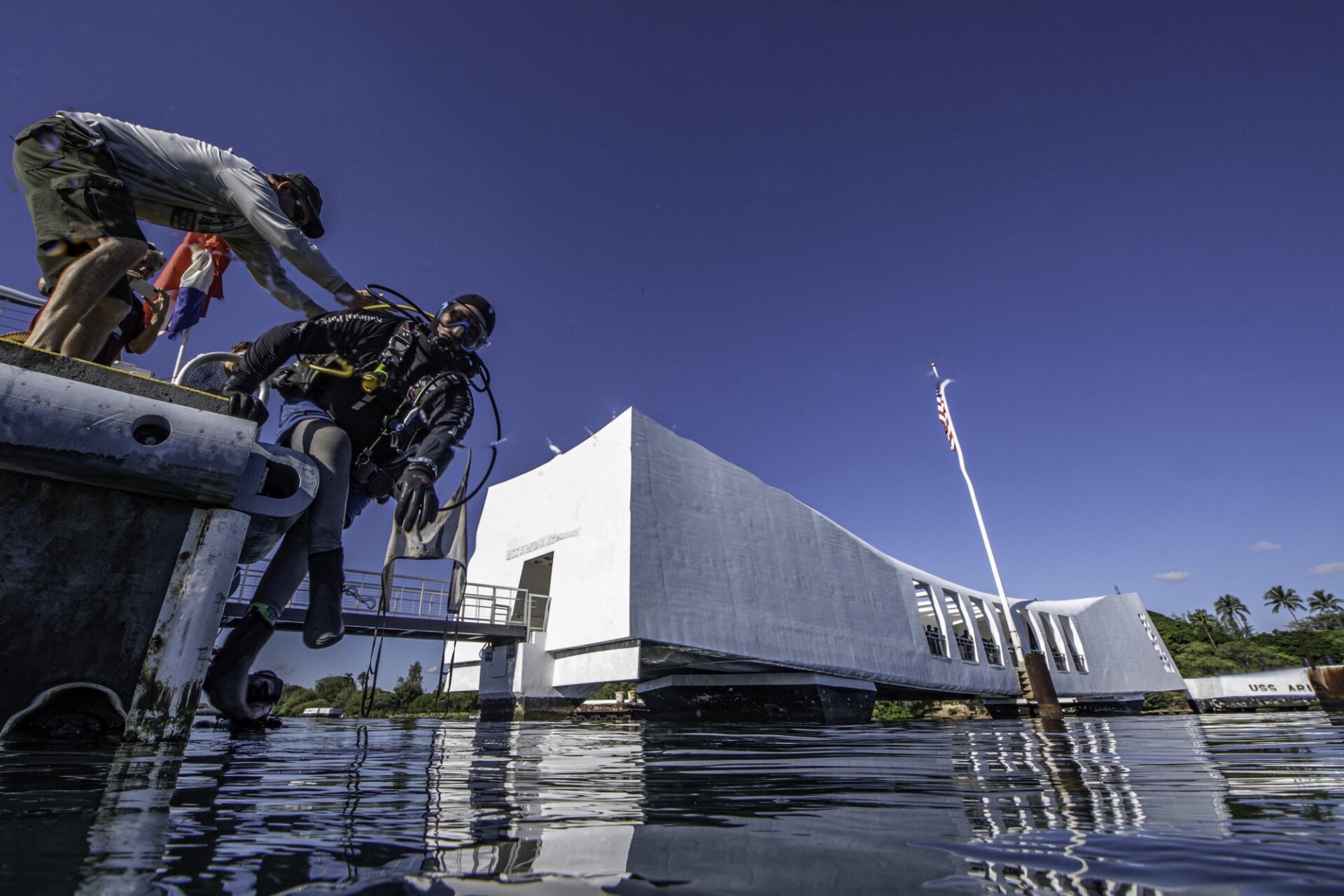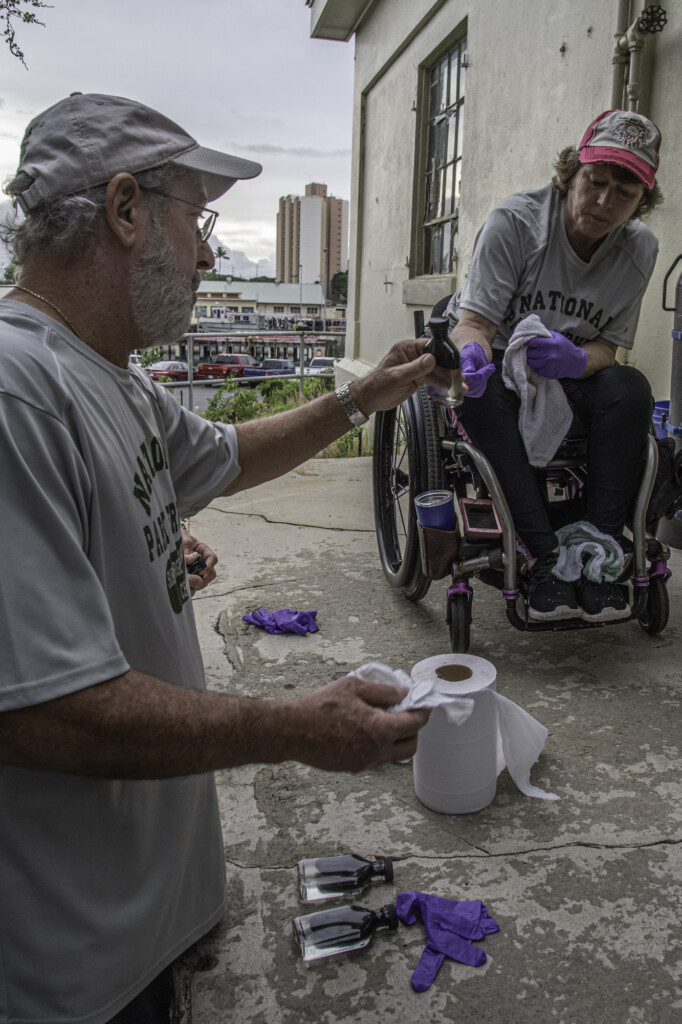By Johanna Fuller, Resource Specialist, Pacific Historic Parks
A monumental 3-year-pilot program began in March 2018 when 4 divers were brought to Hawaii for the Pearl Harbor Wounded Veterans in the Park (WVIP) Program with injuries ranging from paraplegia to severe post-traumatic stress disorder. The WVIP program is a nationwide program supported jointly by National Park Service – Submerged Resources Center (NPS-SRC) and non-profit partner, Pacific Historic Parks.

Fjerstad USS Arizona 2019, WVIP Diver Tom Fjerstad. Photo Credit Dave Conlin NPS-Submerged Resource Center
The Pearl Harbor WVIP program addresses two areas of need. The first is contributing towards NPS’ scientific research and resource protection objectives for the USS Arizona—work designed to study the long-term processes of degradation and preservation on a warship that was bombed and sunk more than 75 years ago. The second is that the program engages wounded veterans in a mission-based, team accountability framework that provides therapeutic and rehabilitative benefit contributing to their physical and emotional health.
When the U.S. was launched into World War II immediately following the Japanese surprise attack on the island of Oʻahu, Hawaiʻi on 7 December 1941 the USS Arizona was fully stocked with ammunition and 1.5 million gallons of “Bunker C” oil. It has been estimated that more than 500,000 gallons of oil remained within the hull of the Arizona after she exploded and burned. The oil, commonly called “Black Tears”, continues to leak to this day at a rate of 2-9 gallons per day.
In order to assist Pearl Harbor National Memorial with the stewardship of the USS Arizona and protect the delicate ecosystem of Pearl Harbor, the National Park Service – Submerged Resources Center has overseen science-based research on the WWII battleship for nearly 40 years. The WVIPs work alongside NPS-SRC staff with oil collection, site photography, artifact inventory, and data collection included photogrammetry and GIS referencing.
It’s not a ‘take a vet diving’ type program. That’s not what the NPS is interested in. We’re not interested in sightseeing and diving vets on the USS Arizona as some kind of reward or thank you for your service. The program really has its genesis in mission driven, science diving and is incredibly effective as the vets are engaged in the research tasks alongside us.
~Brett Seymour, A/V production specialist and deputy chief for the NPS-SRC in Denver
The WVIP divers are a unique group of mission-focused and task-oriented individuals which pairs well with the overall mission of the WVIP program and the work of the National Park Service- Submerged Resources Center.

WVIP divers place oil catchment tent over area where oil leakage occurs. Photo Credit Brett Seymour from NPS-Submerged Resource Center, 03/03/19
Since the Pearl Harbor WVIP pilot program with Pacific Historic Parks began, seventeen divers have participated in four projects. Each project has its own missions with specific tasks. The first two project missions in March and December, 2018 focused on engineering an oil catchment system and collecting oil release data from the ship. After deploying the oil catchment during the March mission, it was discovered that the pitch of the tent and the fabric used to create the tents did not produce reliable oil release rates. For the December 2018 mission, NPS-SRC and WVIP divers went back to the drawing board and decided that using smaller pieces of fabric treated with oleophobic additives along with a higher pitch in the catchment tent would yield accurate data on the leakage rate of the oil.
This past December, 2019, 12 divers – 8 disabled veterans and 4 veteran dive assistants – participated in back-to-back, week-long projects. Assisted by staff from Trimble and Pioneer Electronics, the project missions included reestablishing eight super points locations on the deck of the USS Arizona as part of a long-term project to monitor any movement or settling of the ship.
I have something in my life that excites me… When I’m diving, I am free…. Diving is my freedom for me. ~ Pearl Harbor Wounded Veteran in the Park diver Jeff Combs (Photo at top shows Jeff Combs going into the water assisted by Brett Seymour.)
The amount of planning that goes into each project is extensive. WVIP divers are selected through a vetting process from two current partnerships: The WAVES Project and the Task Force Dagger Foundation. The NPS-SRC works with Pearl Harbor National Memorial to outline research objectives, coordinate the mission logistics and ensure the safety of all the divers while Pacific Historic Parks fundraises and supports the needs for each project.
Plans are underway to continue the Pearl Harbor Wounded Veterans in Parks program in 2020 and beyond with a focus on expanding our team of veteran service organizations and continued stewardship of the USS Arizona.
May 25, 2020 – This article was written by guest contributor Johanna Fuller, Resource Specialist at Pacific Historic Parks.



